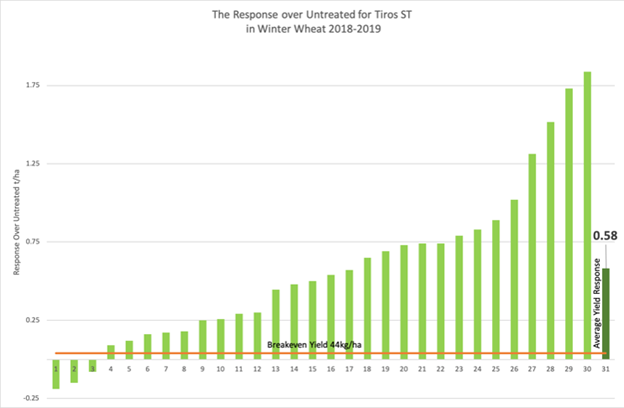At Unium, we’ve been very proud of the performance of TIROS which established itself as the leading biological seed treatment in the UK within two years of its launch in 2020. To be able to say TIROS Max is even better, raising the bar in terms of its field performance, ease of handling and flexibility to treat smaller batches of seed, marks an evolution in biological seed treatments.
I’ve always described endophytes as a back-up generator for crops because of their ability to improve nutrient use efficiency and support crops when they come under stress. This technical guide describes the relationship between endophytes and plants and explains why TIROS Max is such a step forward.
John Haywood
Director
Unium Bioscience
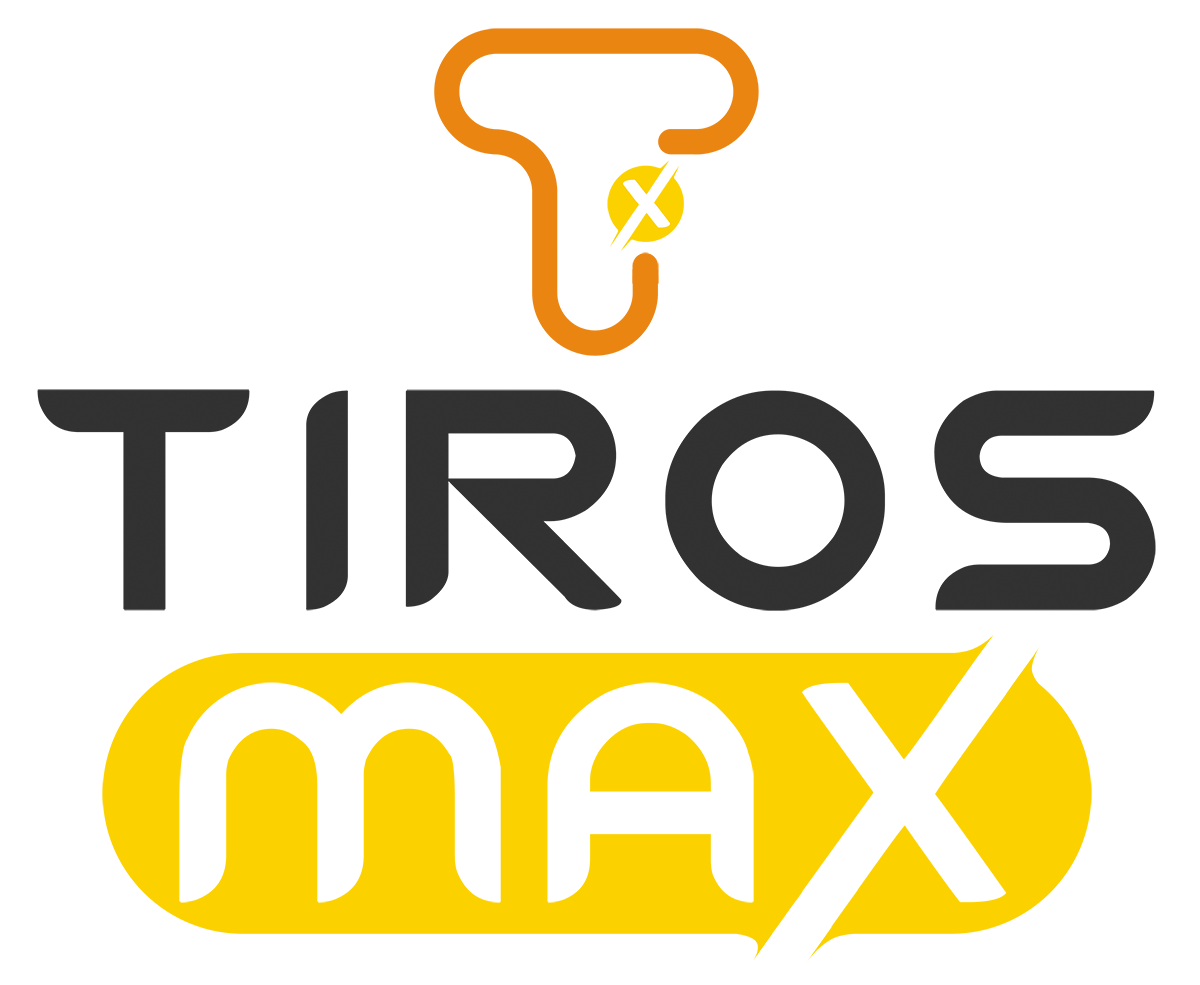
What are endophytes?
Endophytes are symbiotic soil microbes – bacteria, fungi and algae – that plants absorb into their cells and tissues. The best-known association between microbes and plants is probably with mycorrhizal fungi but bacteria endophytes also play an important role, especially in a crop’s early growth stages. Researchers have recently found that these special symbiotic relationships evolved alongside the very first plants, however in modern farming systems natural microbial systems are often weakened due to tillage practices and the use of chemical fertilisers and pesticides.
Plant endophytes are important in agriculture as they have the ability to enhance plant growth, stimulate elongation of root hairs, increase branching of roots, facilitate access to more nutrients, and stimulate oxidative stress tolerance. In the rhizophagy cycle, microbes are absorbed from soil directly into plant root cells where nutrients are extracted oxidatively, which provides nutrients to support plant growth.
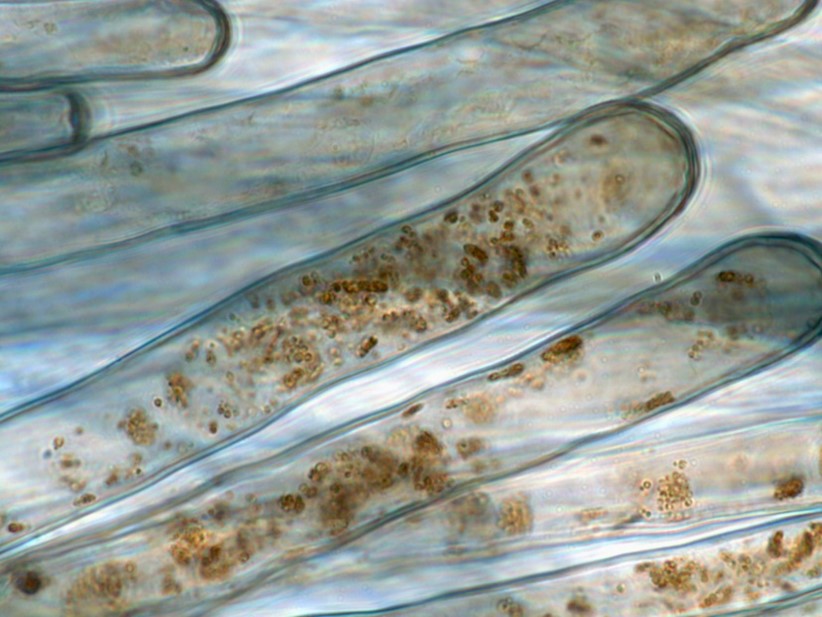
Microbes inside root hairs of a plant, ©Prof James White, Rutgers University.
The rhizophagy cycle
The discovery of how plants utilise these endophytes is relatively new. The interaction was first observed by a group of Australian microbiologists in 2010 and dubbed rhizophagy, but it was Prof James R White’s team at Rutgers University in New Jersey that delved further into the detail and first described the rhizophagy cycle – in which plants seem to ‘farm’ microbes for their benefit.
The process gets underway by plants secreting exudates at their root tips which serve as signalling molecules to attract beneficial communities of microbes. At the root tip meristem, these microbes are internalised by the plant and once inside the root tissues, the plant produces superoxide which strips off the bacterial cell walls to leave protoplasts. It is from these that the plant extracts nutrients.
What happens next emphasises how plants are dependent on microbes not just to help feed them, but also for their root hair development – these massively increase the surface area for absorption of nutrients and water. They do this by secreting substances such as ethylene, nitric oxide and other hormones that stimulate root hair formation.
Some of the surviving protoplasts are then ejected back into the soil from the tips of elongating root hairs, where root exudates encourage their cell walls to reform. And the cycle begins again as the microbes migrate away from the root to acquire the additional nutrients they need to grow and then return to recolonize the root tip meristems, giving up their hard-earned efforts to feed the plant.
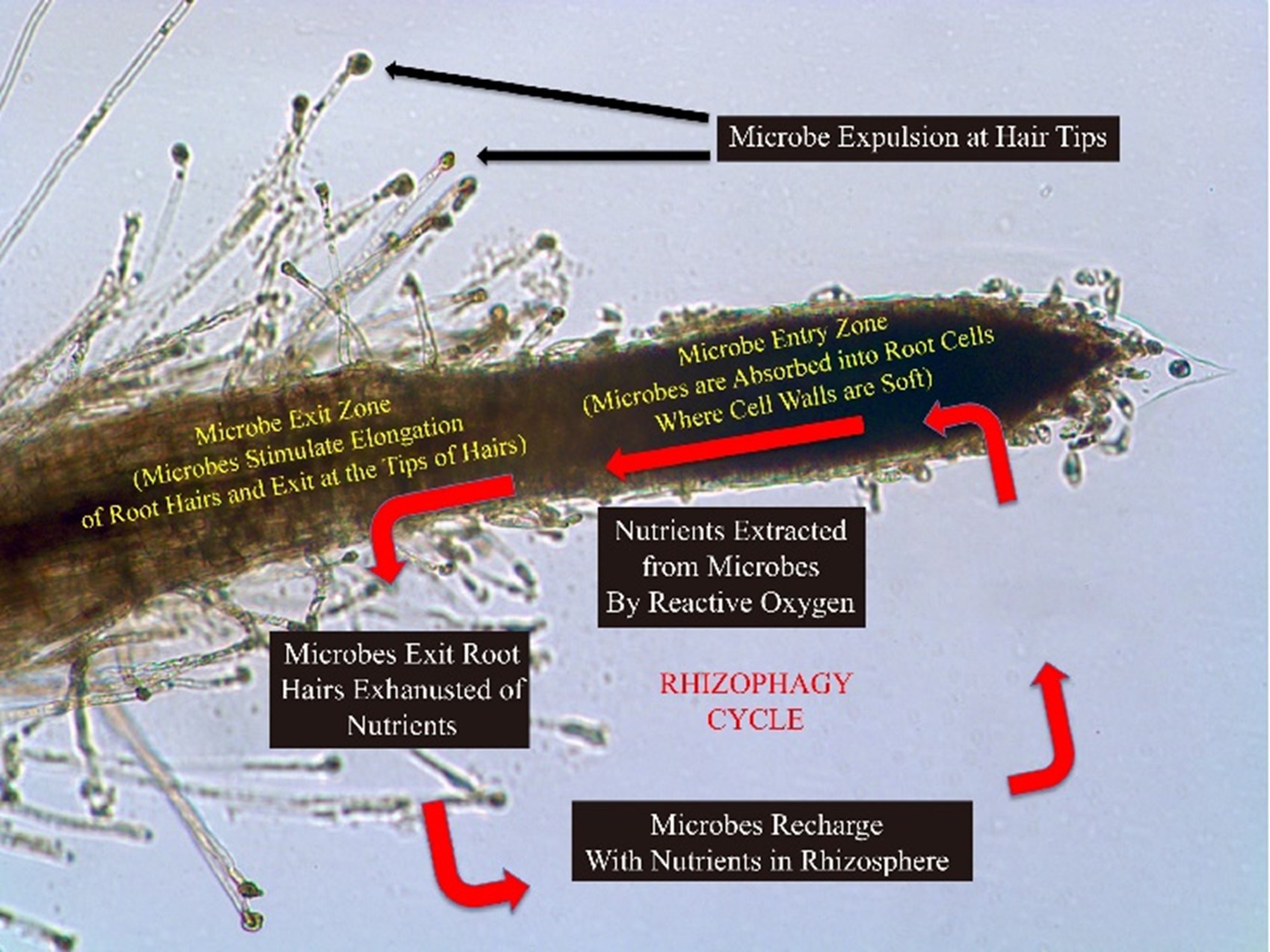
Summary of the Rhizophagy Cycle
Chang et al. Endophyte Symbiosis: Evolutionary Development and Impacts of Plant Agriculture, Grass Research (2023)
Internal movement of endophytes
Some of the endophytes aren’t ejected, but instead are moved throughout its tissues. Many plants put endophytes into their leaf hairs (trichomes) where they fix atmospheric nitrogen in exchange for food from the plant in the form of sugars.
Landrace corn with nitrogen fixing ability has been discovered in Mexico. It possesses larger and longer filamentous trichomes and is highly nitrogen efficient, a trait that could potentially be brought into commercial corn varieties.
Other plants, such as hemp and some invasive weed species, have glandular trichomes which researchers believe are even more nitrogen efficient because the plant and endophytic bacteria work in harmony. These trichomes produce terpenoids, or in the case of hemp cannabinoids, which act as an antioxidant, capturing oxygen around the bacteria that would otherwise inhibit them from fixing nitrogen. The plant is actually helping them be more efficient by removing this potentially limiting factor.
The consortium of bacteria contained within TIROS Max was discovered in native willow and poplar plants growing in nutritionally poor sand and rock along the banks of the Snoqualmie River in the United States. They were found to provide their hosts with the N by fixing atmospheric nitrogen and by sequestering P, enabling them to not just survive, but to thrive.
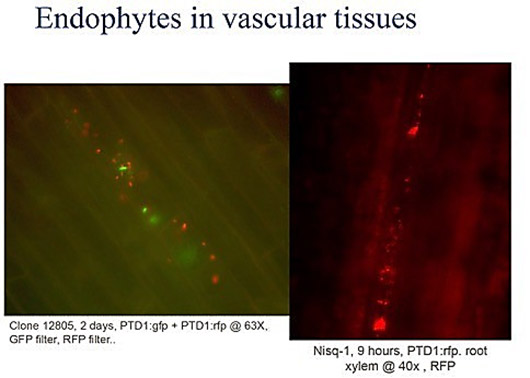
Endophytes in Vascular Tissue
Endophytes on seeds
Rhizophagy is a system common to all plants with root hairs and is especially important in their early development stages. This is why seed-producing plants systematically use these bacteria and move them onto their seeds so that endophytes are in situ when the seed germinates, aiding root hair development and elongation as well as supply of nutrients to the seedling. Later, some plants will form mycorrhizal associations which will take over the process of acquiring nutrients.
In modern farming systems, seed cleaning and handling removes many of these naturally occurring endophytes or soils may be microbially depleted leading to poorer endophyte associations. Farm-saved seed can be advantageous from an endophyte perspective because they are most likely to contain endophytes already adapted to its growing environment.
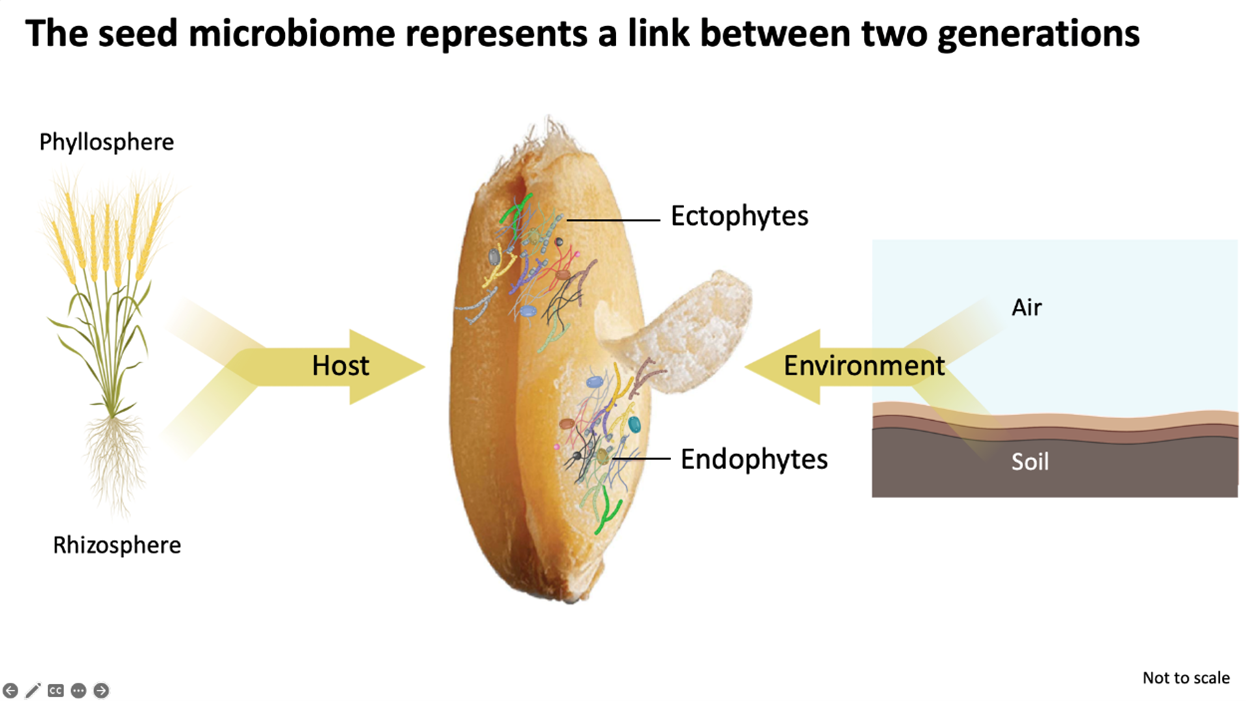
Seed microbiome represents a link between 2 generations
Unium Endophytes – TIROS Max and TARBIS
TIROS Max can replace some of the microbes lost from seed during its journey from seed producer to farmer, as well as act as a supplement in soils where microbial communities are depleted. Biostimulant microbes placed on or near to the seed can also kickstart the rhizophagy cycle.
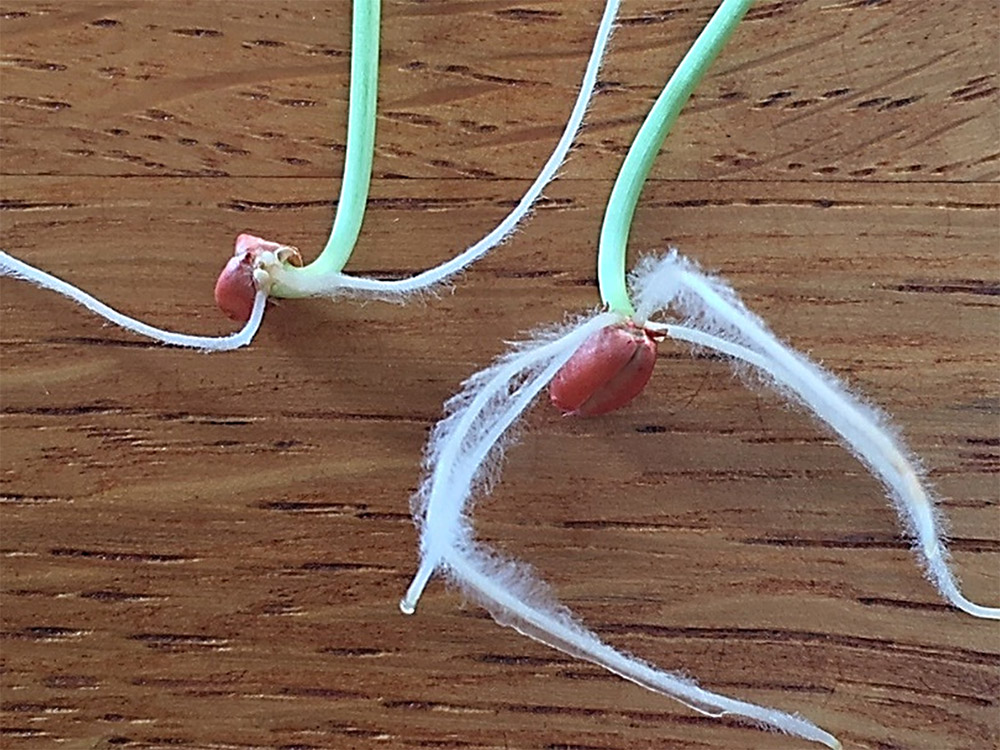
TIROS Max kickstarts the rhizophagy cycle, resulting in a proliferation of elongated root hairs
But not all endophytes are equal, studies have shown that TIROS Max contains selected strains of endophytes adapted to cereals which set up a more permanent association with the plant. These were discovered by screening thousands of isolates at the University of Washington which led to a consortium of bacteria optimised for integration into diverse cropping systems.
TIROS Max and TARBIS contain two select strains of generalist endophytes, one to solubilise and sequester phosphorus and one to fix atmospheric nitrogen.
A key component in the success of these strains is the integration with chemistry. This careful marriage contributes to greater consistency and integration into standard farmer practices. The endophyte strains in TIROS Max are not limited to seed application, they can also be applied to the foliage as TARBIS. That’s because the microbes it contains have also been selected for foliar ingress into the plants vascular system, a very unique attribute as most commercial endophytes only can move via the intercellular spaces.
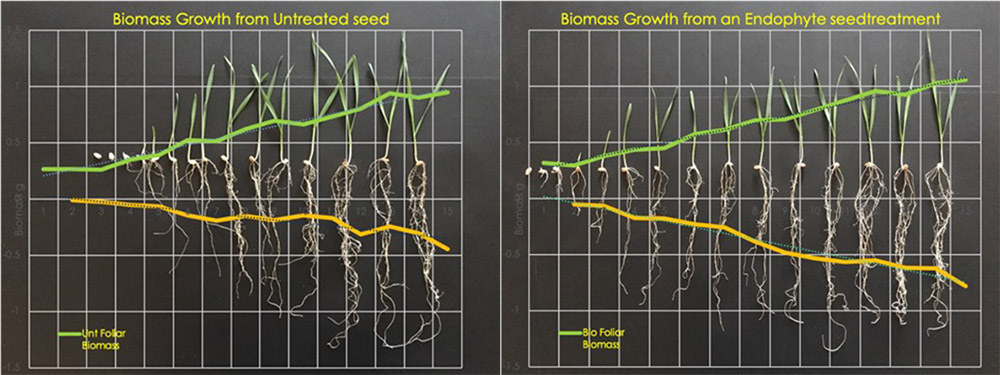
The endophytes in TIROS Max and TARBIS have been shown to increase above and below ground biomass.

TIROS Max facilitates faster emergence and better establishment
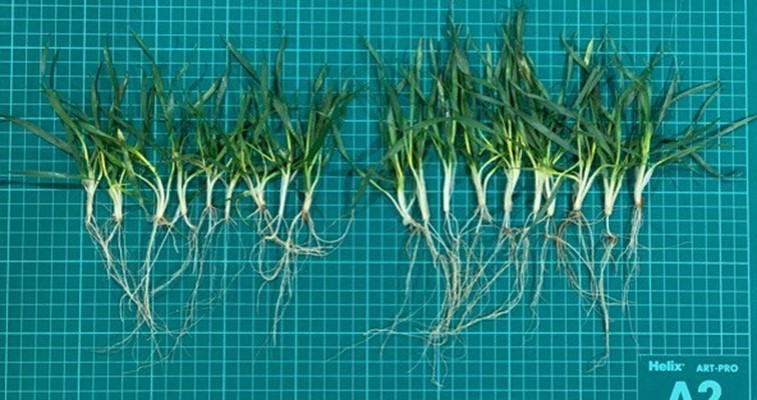
Enhanced tillering and faster growth evident in crop treated with TIROS Max endophytes.
New advanced formulation
Building on the reliable performance of TIROS, Unium has developed a unique, advanced formulation of endophytes that supports and enhances rhizophagy as well as enabling crops to fix atmospheric nitrogen (N) and sequester other plant nutrients.
The new formulation provides a prebiotic, also known as an extender, in powder form rather than a liquid, removing a mixing phase when preparing the seed treatment and enabling more flexibility in the size of batches to be treated – 1-tonne, 5-tonne, as well as 10-tonne batch sizes are now possible.
The extender is a crucial part of the TIROS Max seed treatment and reduces the variability in performance seen historically when live biological products are applied to seeds. The new formulation delivers 13% more Colony Forming Units (CFUs) per seed than TIROS and is effective at preserving the endophytes during application, as well as supporting and promoting early population growth during germination and establishment.
Tiros MAX Performance
Like its predecessor, TIROS Max acts as a ‘back up’ power supply; fixing N from the atmosphere throughout the season, enhancing yield where standard N rates are applied, or maintaining yield where N is required. TIROS Max also promotes the plant’s ability to sequester phosphorus, potassium, zinc and additional microelements, but does it better.
The endophytes in TIROS Max have been proven in the lab, in field trials, and in commercial use.
Summary of key benefits:
